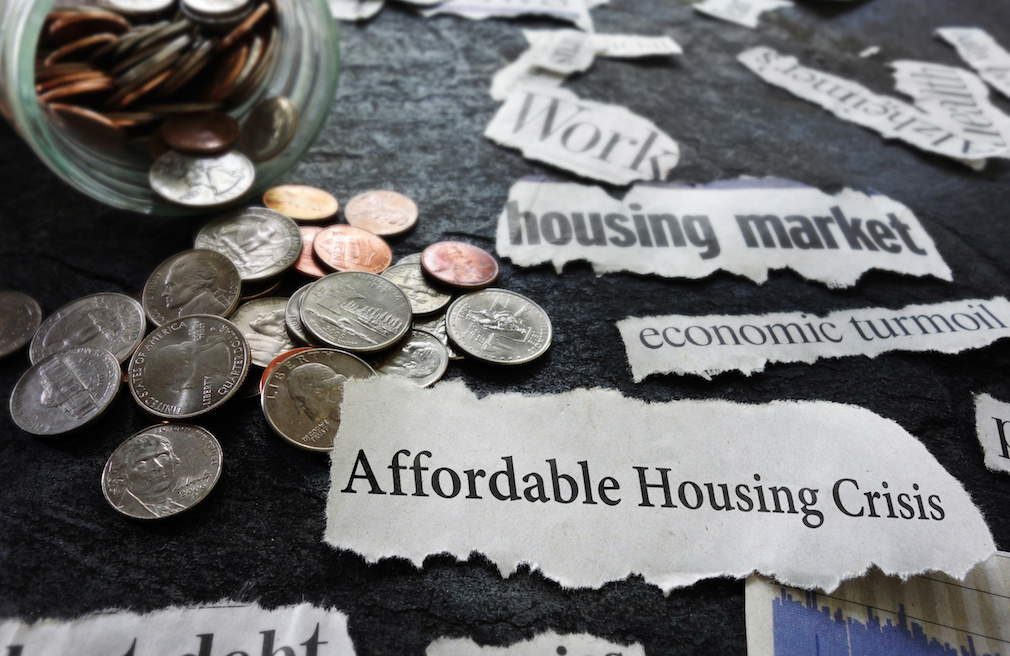America suffers from a severe shortage of affordable homes. This development did not occur overnight: Over the past 20 years, we have “underbuilt” housing by at least 5.5 million homes.
Policymakers are rightly focused on helping people afford to purchase or rent a home through down payment assistance, housing vouchers and other programs. The unfortunate truth is that too many households lack sufficient income to cover their housing needs, a situation exacerbated today by high inflation.
But these “demand-side” efforts treat only half the problem. Pouring money into programs that help families afford homes will have little effect if there are too few homes available to move into. “Supply-side” solutions that focus on new construction and the preservation of the existing housing stock are equally important.
Low housing inventory
The lack of adequate supply to match demand is at the core of today’s housing-affordability crisis. In 2021, the overall rental vacancy rate dropped to 5.8%, the lowest level since the mid-1980s. At the bottom end of the income spectrum, the supply shortage is particularly acute: For every 100 low-income households, there are only 55 affordable rental homes available on the market; for every 100 extremely low-income households, there are just 36.
In many communities, lower-income households now find themselves competing with higher-income households for the limited number of rental homes.
Crushing housing costs
This demand-supply imbalance has led to crushing housing costs that cannot be sustained over time. Today, nearly one quarter of all renters, some 11 million households, are considered “severely burdened,” paying more than half their incomes just on housing. Not surprisingly, the lowest-income families are the most dramatically affected, accounting for 86% of the households with severe rent burdens. Many of these households include older adults and children.
The supply of homes for sale is limited as well. At the beginning of 2022, active home sale listings fell below 500,000 for the first time. The quantity of new, entry-level homes has been falling sharply since 2008. In 2020, just 65,000 entry-level homes were built compared to 420,000 in the late 1970s, a decline of more than 80%.
A perfect storm
As the supply of homes to buy has dwindled, prices have risen, preventing potential first-time homebuyers from entering the market. Despite unprecedented demand for new housing, just 28% of sales in the last 12 months went to first-time buyers, the lowest level in the past six years. Throughout the top 100 metropolitan areas in the U.S., a median-priced home was unaffordable to nearly 13.4 million Americans—67% of potential first-time buyers.
When potential first-time homebuyers cannot find a home in their price range, they remain renters, putting even more pressure on the already limited supply of rental homes and driving up rents. In 2021, median rents grew by 17.8%, another unprecedented increase.
With housing costs skyrocketing, expanding the supply of affordable homes – both for rent and sale – must be a national priority. So, what can we do?
On the rental side, we should significantly boost federal support for the Low-Income Housing Tax Credit, a program with a long history of success in supporting the construction and preservation of rental homes affordable to low-income families. We should also create incentives for more landlords to participate in the Section 8 Housing Choice Voucher program, while identifying new ways to encourage private developers to invest in “mixed-income” housing in resource-rich communities.
To help build up the stock of for-sale housing, Congress should enact the Neighborhood Homes Investment Act that would encourage the construction and rehabilitation of housing stock in distressed communities and thereby create opportunities for first-time homebuyers.
On top of these efforts, there must be a national commitment to reform our land use and zoning practices that too often act as barriers to the development of affordable housing. We can also invest in and deploy new construction technologies, like 3D printing, which could save time and reduce costs.
Taking these steps has an added benefit: a stronger, more vibrant economy. According to one estimate, building 550,000 new homes annually over the next 10 years would generate $411 billion in new economic activity through greater labor mobility, new tax revenue, and associated economic growth.
Increasing the supply of affordable homes is a moral and economic imperative. It’s past time to push for bold, bipartisan solutions to get the job done.
Ron Terwilliger is chairman emeritus of the Trammell Crow Residential Company and the founder of the J. Ronald Terwilliger Center for Housing Policy at the Bipartisan Policy Center.
This column does not necessarily reflect the opinion of HousingWire’s editorial department and its owners.
To contact the author of this story:
J. Ronald Terwilliger at rterwilliger@bipartisanpolicy.org
To contact the editor responsible for this story:
Sarah Wheeler at swheeler@housingwire.com






